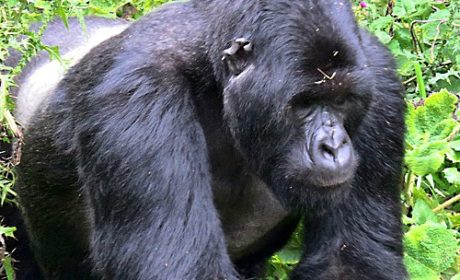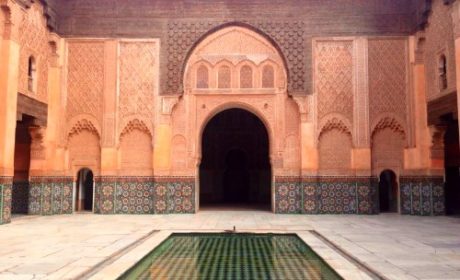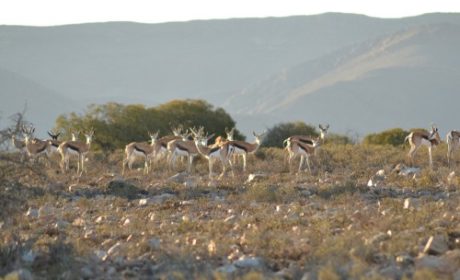Is a safari on your travel bucket list? Alan and I still consider South African safari as the trip of a lifetime. But there are many more options when it comes to wildlife watching in Africa.
What about spending 10 days in Kenya? My Itchy Travel Feet featured contributor, Debi Lander (ByLanderSea) did just that. Follow along as Debi shares insights from her Kenya itinerary.
An African safari ranks high on the wish list of many boomer travelers. A trip to Africa is a once-in-a-lifetime chance to see and photograph exotic animals in their natural habitat. While a variety of outstanding and ethical tour operators and legendary luxury lodges exist, the cost remains prohibitive for most of us.
I searched online for hours. Eventually, I found a 10 day Kenya itinerary offered by Craftours that included most of the places I wanted to experience. The cost also included airfare from New York City.
No, I wouldn’t fly about in a bush plane or take a scenic hot-air balloon ride. But the affordable cost was budget-friendly, especially since I was paying my own way.
The following is a day-to-day review of my Craftours Kenya itinerary.
Table of Contents
Day 1: Nairobi
I flew to New York, then connected for the direct flight to Nairobi. My group of 12 assembled in the baggage claim area, then boarded a bus for a drive to our hotel.
Alice Ridge, a knowledgeable Craftours host, accompanied us throughout our trip and always ensured things ran as planned. We arrived at the Nairobi Serena Hotel, where we spent the next three nights. The Serena group offers the leading luxury accommodations in East Africa, and this hotel did not disappoint.
After an afternoon nap and relaxing until dinner. David Johnson, a pro photographer who accompanied us, offered a session with helpful tips on photographing wildlife. I then went to bed early to be ready for the next day’s adventures.
Boomer Travel Tip
In today’s travel climate, trip insurance is a must. Compare policies and rates at InsureMyTrip.
Day 2: Elephants and a movie set
David Sheldrick Elephant Orphanage
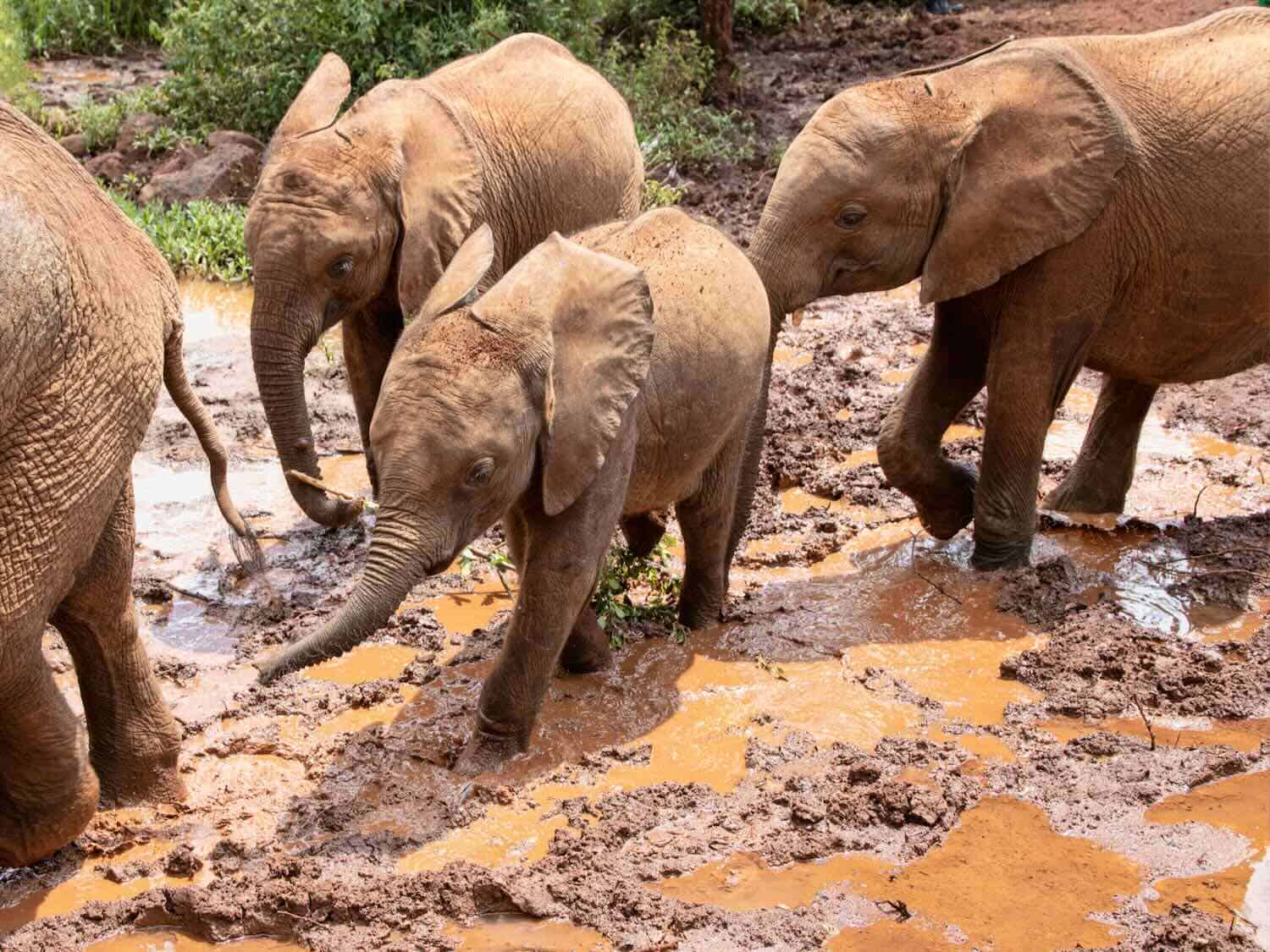
First up was a trip to David Sheldrick’s famed Elephant Orphanage. Pioneers in the rescue and hand-raising of orphaned baby elephants and rhinos, the organization sees them through to their reintegration into the wild.
The David Sheldrick Wildlife Trust (DSWT) elephant center is open just one hour a day. They rope off a large area, and visitors watch the little elephants feeding from bottles held by their caretakers.
The babies gobble up the milk and then play with each other. One fella seemed obliviously of everything except taking a mud bath.
The second group of slightly older elephants came out after the youngest ones were led away. Once they graduate from the nursery, aged 2-3 years, the elephants move to one of the DSWT’s Reintegration Centers, from where they will ultimately return to the wild.
We heard a running commentary throughout as the guide explained the wildlife trust’s background and history. The guide also talked about DSWT’s ongoing rescue work.
Karen Blixen’s Out of Africa Home
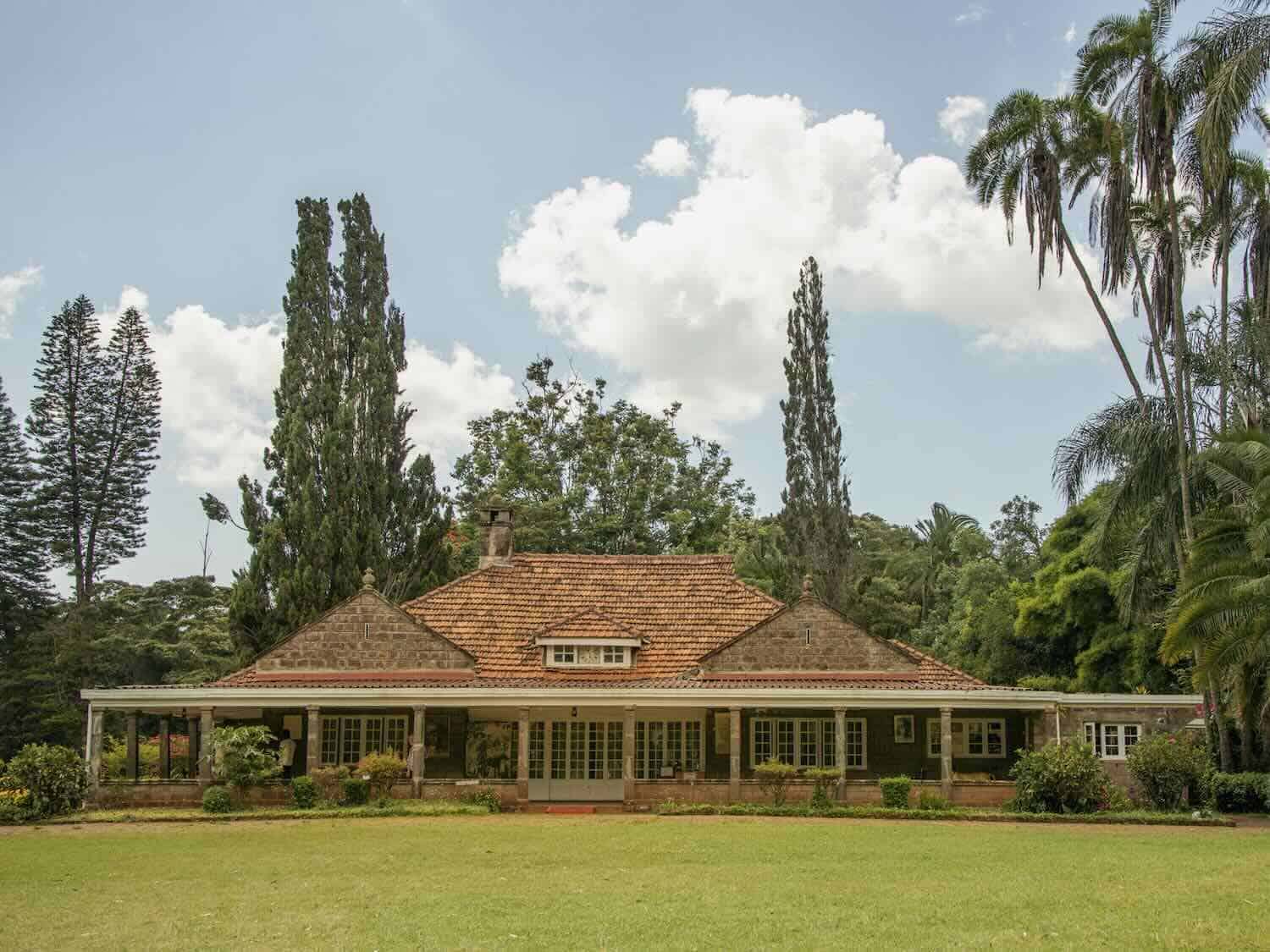
Afterward, we enjoyed an excellent lunch at Tamambo, a restaurant in the Karen Blixen Coffee Garden. Then, we moved on to the adjacent Karen Blixen Museum, located on a farm at the foot of the Ngong Hills (still in Nairobi). The place gained international fame with the release of the Oscar-winning movie Out of Africa, based on Karen’s autobiography.
I highly recommend you watch the film before your trip to Kenya. I did and felt like a movie extra walking onto the set. I could easily envision scenes using this location, along with some of the clothing and props from the film.
The home is the centerpiece of a farm owned by the Danish Author Karen and her Swedish Husband, Baron Bror von Blixen Fincke. The house and furnishing take you back to Kenya’s era under British rule.
Boomer Travel Tip
Follow CDC health guidelines when traveling to Kenya, including malaria protection. Visiting a travel doctor is also a good idea.
Day 3: Nairobi city tour, giraffes and shopping
Nairobi City Tour
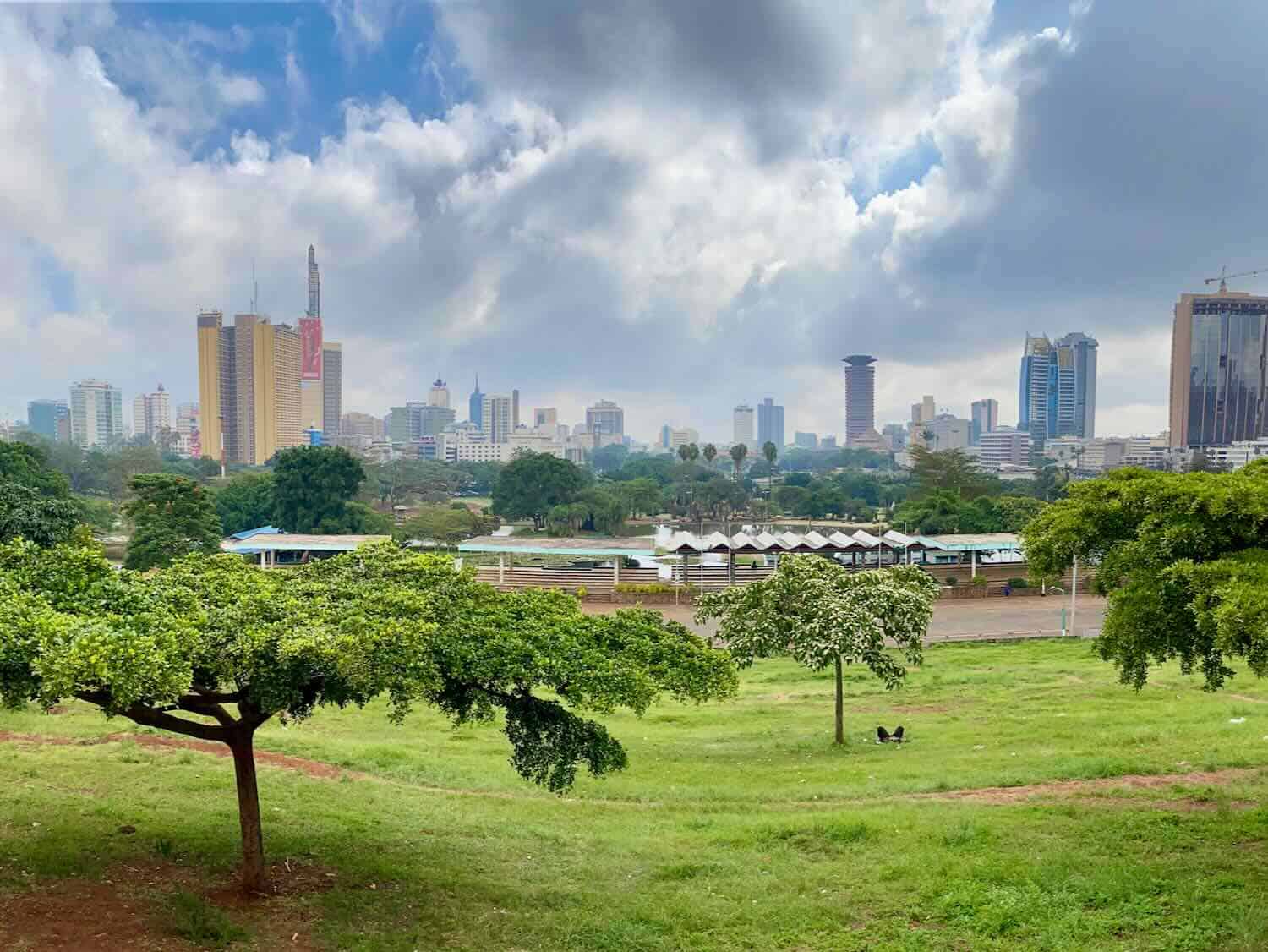
Can’t go to Nairobi without a tour of the city. The next day, a local guide joined us on board the bus and described the sites in the capital city, a population of nearly five million.
We drove past some official buildings and stopped at one overlook for photos. As expected, the government area appeared tidy and clean, but the poorer areas were depressing.
Giraffe Sanctuary

We went to a Giraffe sanctuary, a forested area in the Nairobi suburbs where I could have lingered for hours. In 1979, the African Fund for Endangered Wildlife (AFEW) was established to protect the last remaining Rothschild’s giraffes in Kenya.
At the time, there were only 80 surviving individuals in the country. Thanks to their tireless hard work, the number has risen to over 600.
My visit began with a short lecture on the four species of giraffe (who knew?). Did you know that no two giraffes have the same coat pattern?
We then entered the browsing area, where we were handed food pellets made of corn, wheat, grass, and molasses. You place them in your palm and feed giraffes as they come close.
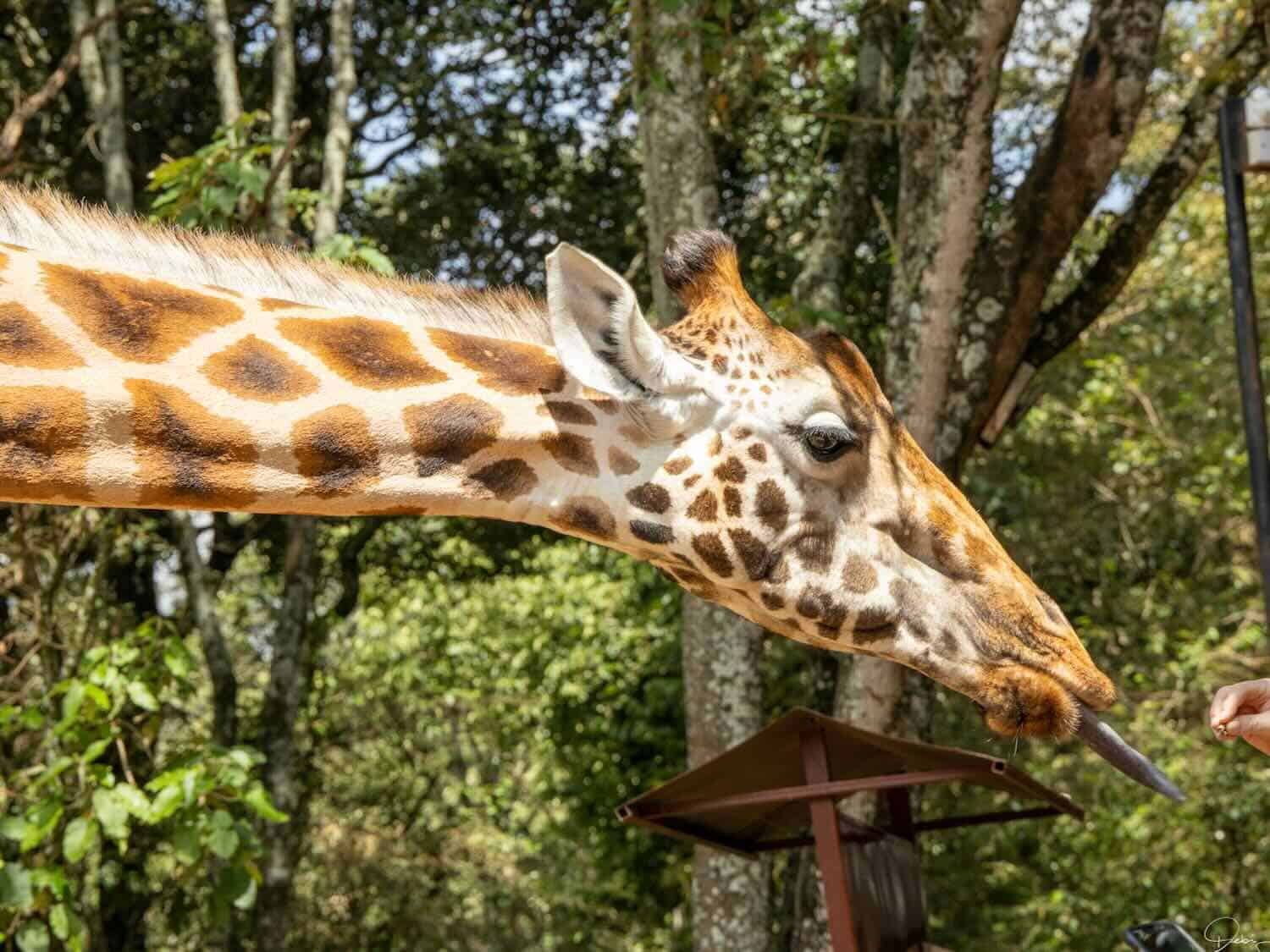
Giraffes tongues (a rather ugly bluish-gray color) are very long. To get even closer, move up to the feeding platform, where you will get a kiss!
I photographed the gentle giants, including some young ones from the platform and below. Giraffes are quiet animals and move gracefully. I felt immense joy to be around them.
Looking off to my right, I glimpsed stately Giraffe Manor, an exclusive boutique hotel owned by The Safari Collection. The historic manor house harkens back to the 1930s when visitors first flocked to East Africa for safaris.
Giraffes visit morning and evening, poking their long necks into the hotel windows in hopes of a treat. FYI: Giraffe Manor is pricey, but make reservations early if you want to book a night.
Boomer Travel Tip
MedjetAssist Members who are hospitalized 150 miles from home receive medical transport to a home-country hospital of choice. Memberships from $99.
Kazuri Bead Factory
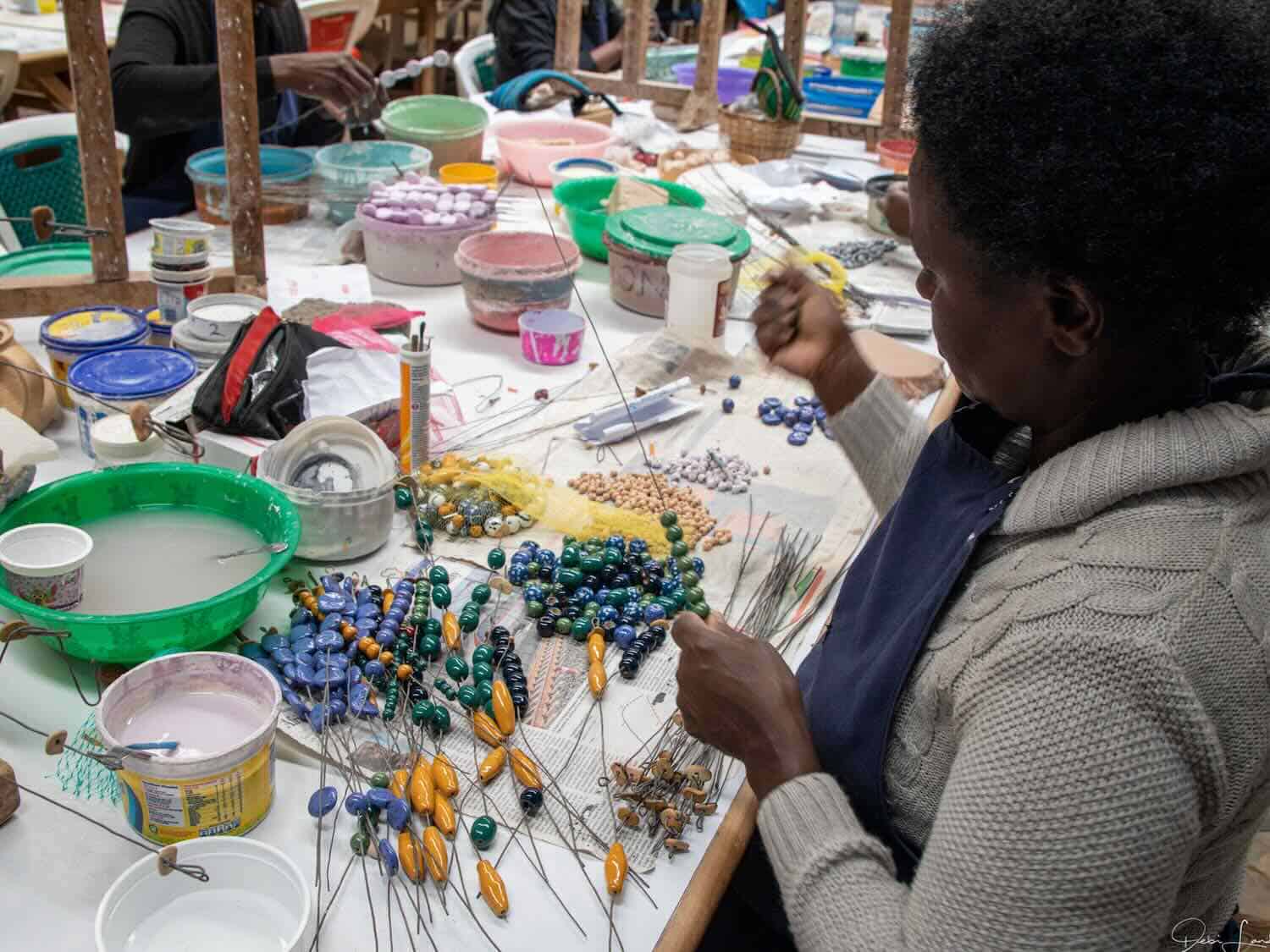
The Kazuri Beads and Pottery Centre became our next stop, a surprisingly interesting place. We toured the large facility talking with the Kenyan women who produce brightly-colored, handmade ceramic jewelry. The center provides needed employment and healthcare services for hundreds of them and their families.
Kazuri means “small and beautiful” in Swahili, and this describes the splendid ceramic bead-shaped by hand. The beads are fired once, glazed, and then fired again before being strung. The main showroom offers an overwhelming collection of necklaces, earrings, and pottery, a terrific place to pick up souvenirs and gifts.
Day 4: Into the Wild at Sweetwaters Tent Camp on the Ol Pejeta Conservancy
My group members were most excited to be heading for Sweetwaters Serena Camp, where we would spend five nights. On the way, we passed many small villages.
We stopped in Nyeri, famous for its coffee, to browse around an artisan center. The array of artwork and gifts surprised me but seemed overpriced as you have to barter with the sellers.
A herd of zebras greeted us upon arrival at the gated entrance to Sweetwaters Camp, within the sprawling Ol Pejeta Conservancy. It was as if a movie director yelled, “cue the zebra!”
The zebras were merely roaming around, but the group was delighted to stop for photos. At the time, we didn’t realize how much closer we would get to animals on our safari game drives.
Ol Pejeta Conservancy is one of Kenya’s most noteworthy conservancies. It’s home to the ‘Big Five’ (elephant, rhino, lion, buffalo, and leopard), all of whom we would see.
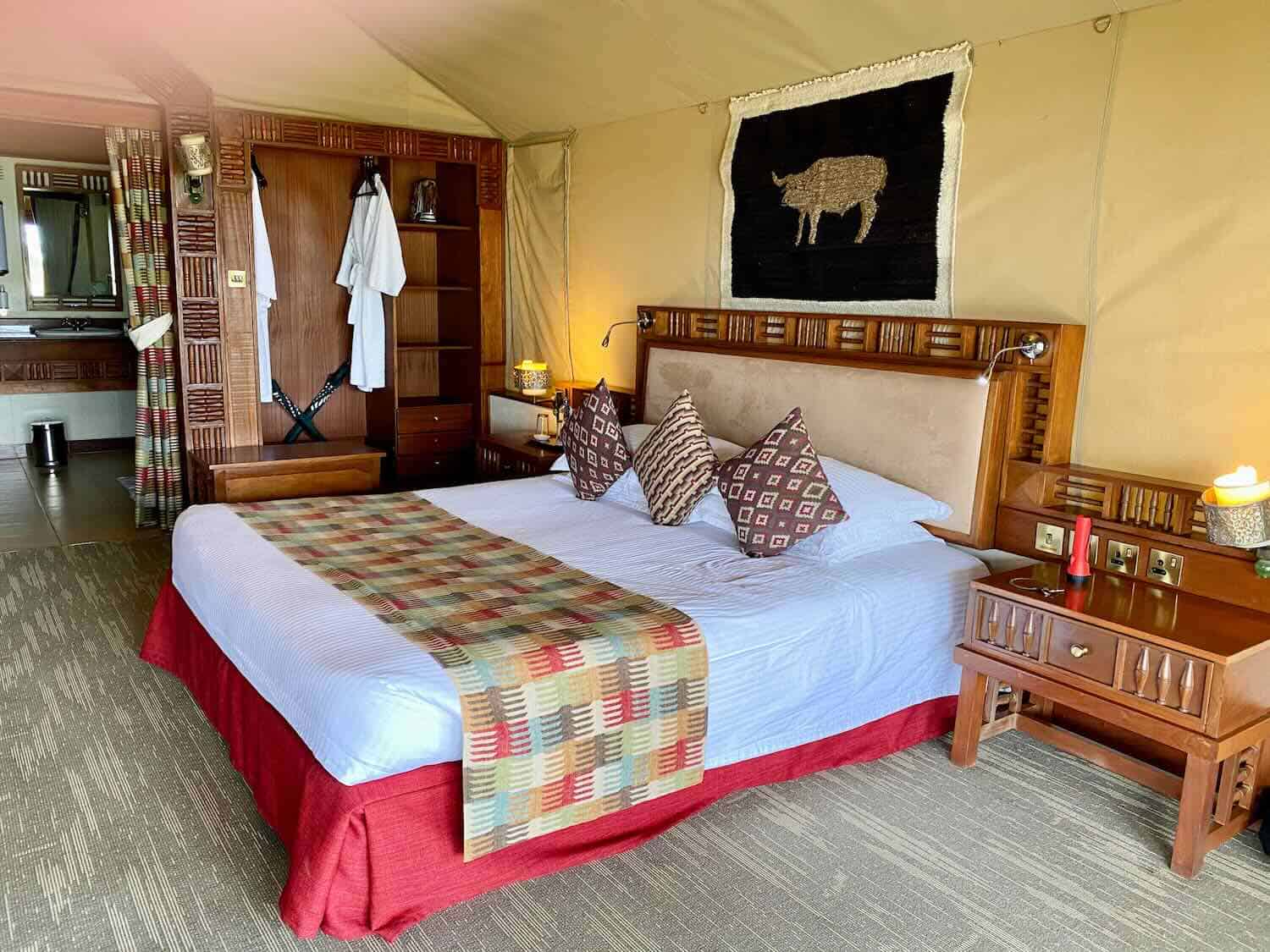
I couldn’t believe my lodging was one of 17 deluxe (glamping) tents with a thatched roof. Imagine an air-conditioned space with a spacious bedroom, bathroom with two sinks, a lovely shower, and a separate toilet. An extra small bed sat opposite the queen bed if a couple brought a child.
The front of the tent featured a glass door and provided scenic views of Mount Kenya and grazing animals on the grassy plain. An electrical fence and moat stood between the tents and the field for safety, but I never saw an animal come close.
Late afternoon game drive
We dined and roamed around the facility before taking a late afternoon game drive. Split into groups of four or five, we climbed into safari vans. A pop-up roof was held open at the top for standing (in stocking feet on the seats) to get better views.
We met our driver/guide, a lovely man raised in the area. All the guides are naturalists, very knowledgeable in the wildlife and their habits.
The many zebras that we saw displayed an intense contrast between their black and white stripes. What stunning coats!
We watched a lone old elephant near the side of the road in awe. His skin was covered in deep wrinkles, but his trunk curled and uncurled ever so delicately.
The guides communicate with each other via radio. So ours followed a tip, and we sped off to hunt for reported lions.
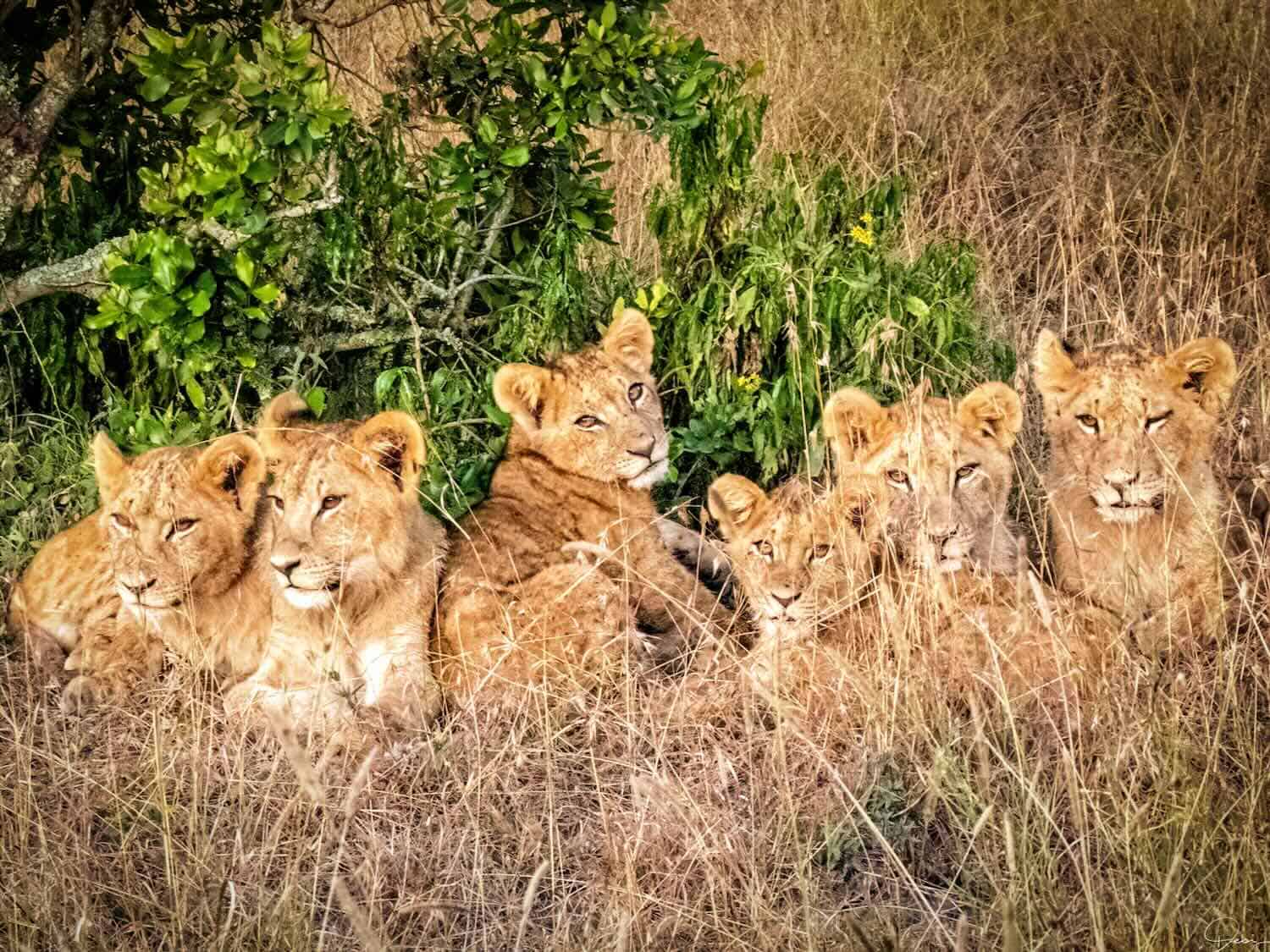
I was spellbound when our guides finally found the lion pride. The adorable huddle of cubs gave us a gift – a chance to capture a photo with most of them looking in the same direction.
It all happened so fast, but the excitement in my van was palpable. This was why we’d come here, and seeing lions was the real deal.
Driving back to camp, the sunset appeared. Gold rays beamed out and down onto the savannah, such a fitting scene to end our first outing.
We moved right on to a buffet dinner in the glass-walled Rhino Room overlooking a watering hole. Of course the group shared stories about the lion sighting. This became a regular activity after each outing, sometimes comparing photos from the back of our cameras.
Day 5: Rhino watching and a trip to the Equator
I awoke in the darkness since game drives leave before sun-up and grabbed a cup of coffee, gazing upon a surreal foggy plain with Mt. Kenya in the distance. Yes! I was out in Africa. The sun slowly inched its way above the mountains providing a wondrous vista.
Rhino watching
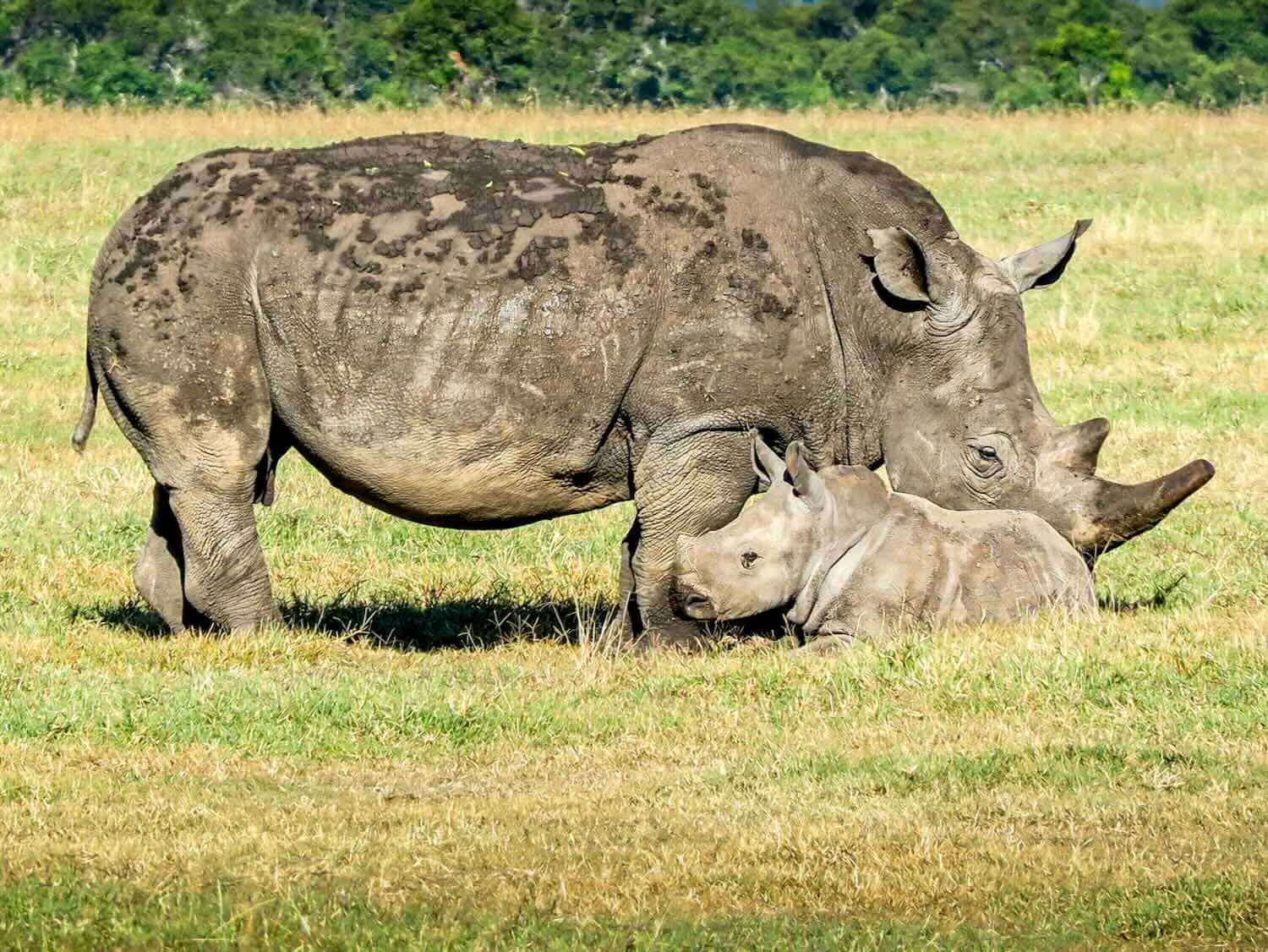
We soon encountered rhinos on the move. I fell in love with the mama and her baby, who was trying to keep up. The Ol Pejeta Conservancy is home to over 10,000 large mammals. It is the only park where the big 5 and chimpanzees can be seen.
Ol Pejeta also boasts the fastest-growing population of rhinos in Africa. You’ll find southern white rhino, about 80 endangered black rhino, and a unique sanctuary guarding the two last remaining northern white rhino in the world.
Equator visit
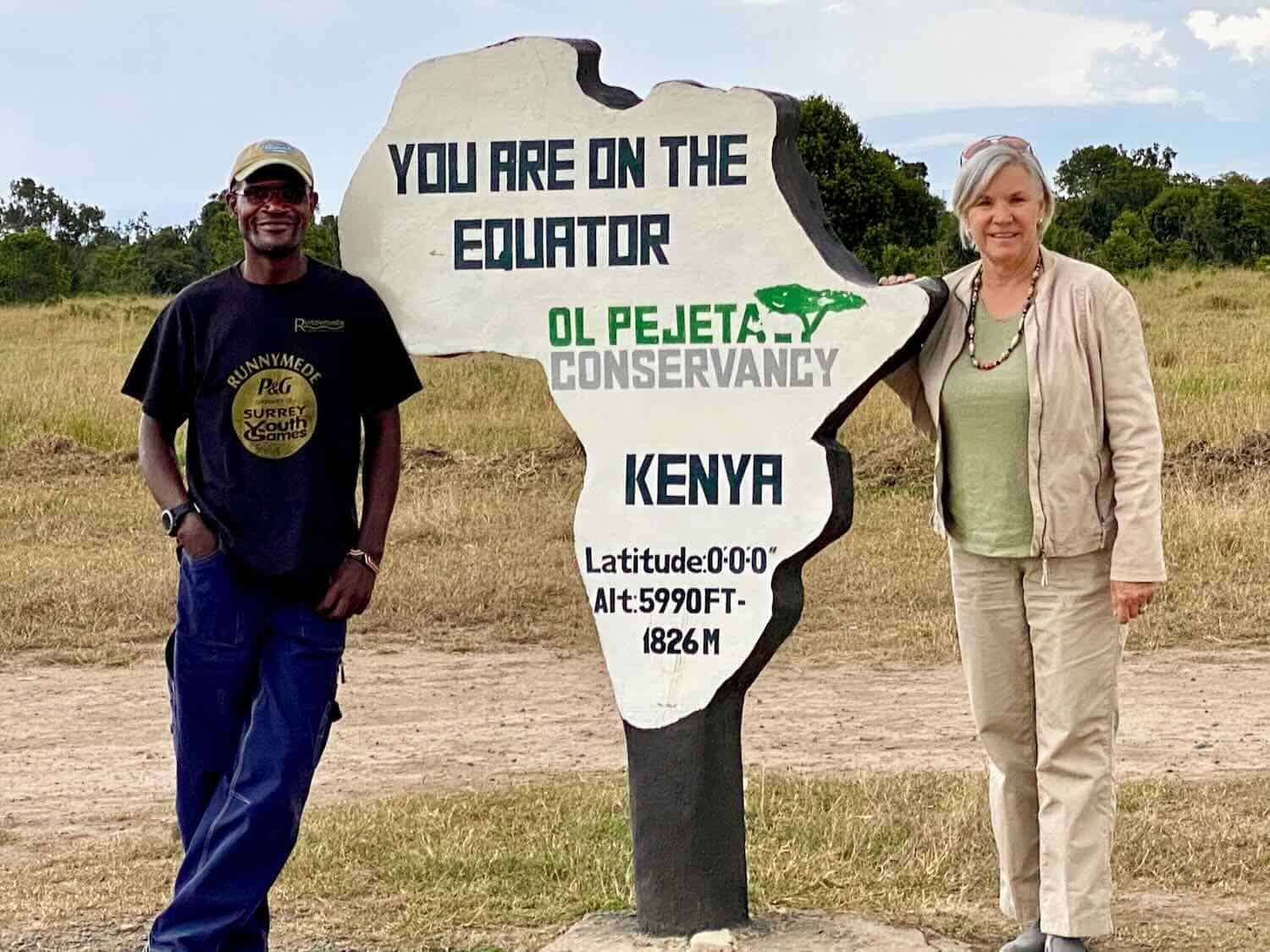
After lunch, we took a trip to the Equator, lying at latitude zero in a nearby village. While simple, the visual astounded me.
A man placed a stick in a water bucket. It swirled around in one direction, in the northern hemisphere, and the opposite direction a foot away- in the southern hemisphere.
Science rules the turning stick, and it cannot be changed. Amazing! The place isn’t much, other than a sign.
Late afternoon game drive
Late afternoon meant another game drive, which might have been my favorite. We discovered a large herd of elephants, including a few babies.
Our naturalist said that the littlest was likely just a day or two old. He was so cute, playing peek-a-boo under his mom’s legs.
While you can watch a 4-D documentary, the quintessential difference between being there and watching the animals in person surpasses all. The memories will never be forgotten.
Our guide also pointed out a group of active hyenas with many babies. We marveled at the giraffes striding along with the poise of ballet dancers. I pinched myself – again.
Day 6: Chimpanzees, rhinos and a bush dinner
The sunrise did not disappoint, but the mesmerizing cape buffalo herd topped it. The massive beasts weren’t moving much, probably a good thing as they are very dangerous.
We saw elan, elephants, gazelles, and rhinos. A group of baboons frolicking in trees completed our morning game drive.
The Chimpanzee Sanctuary
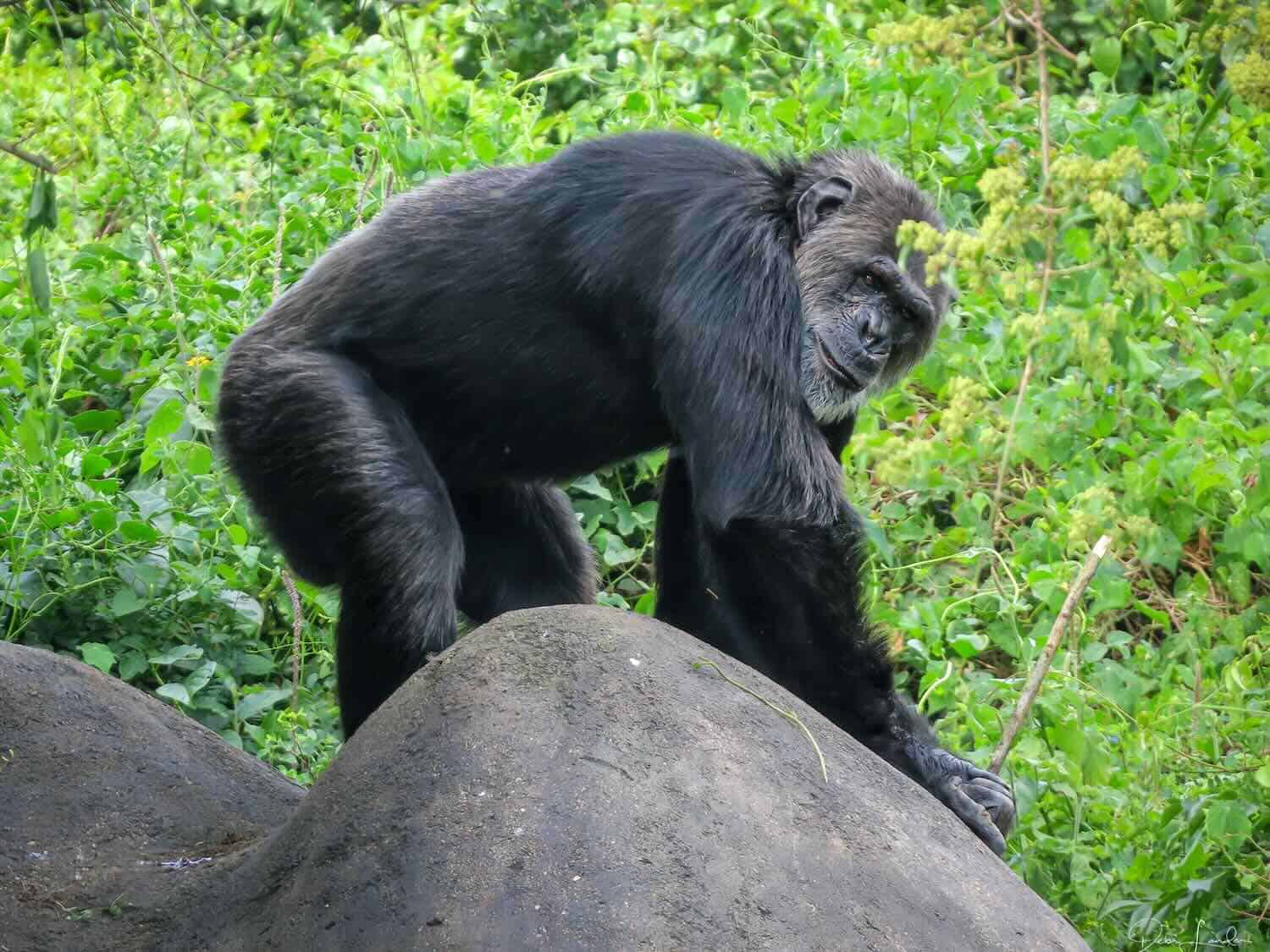
We visited the Sweetwaters Chimpanzee Sanctuary (website here), a non-profit established in cooperation with the Kenya Wildlife Service and the Jane Goodall Institute for Conservation Projects for Chimpanzees Throughout the World. The chimps are not indigenous to Kenya, but these rescued creatures, fortunately, have found a safe home.
Visiting Black Rhinos
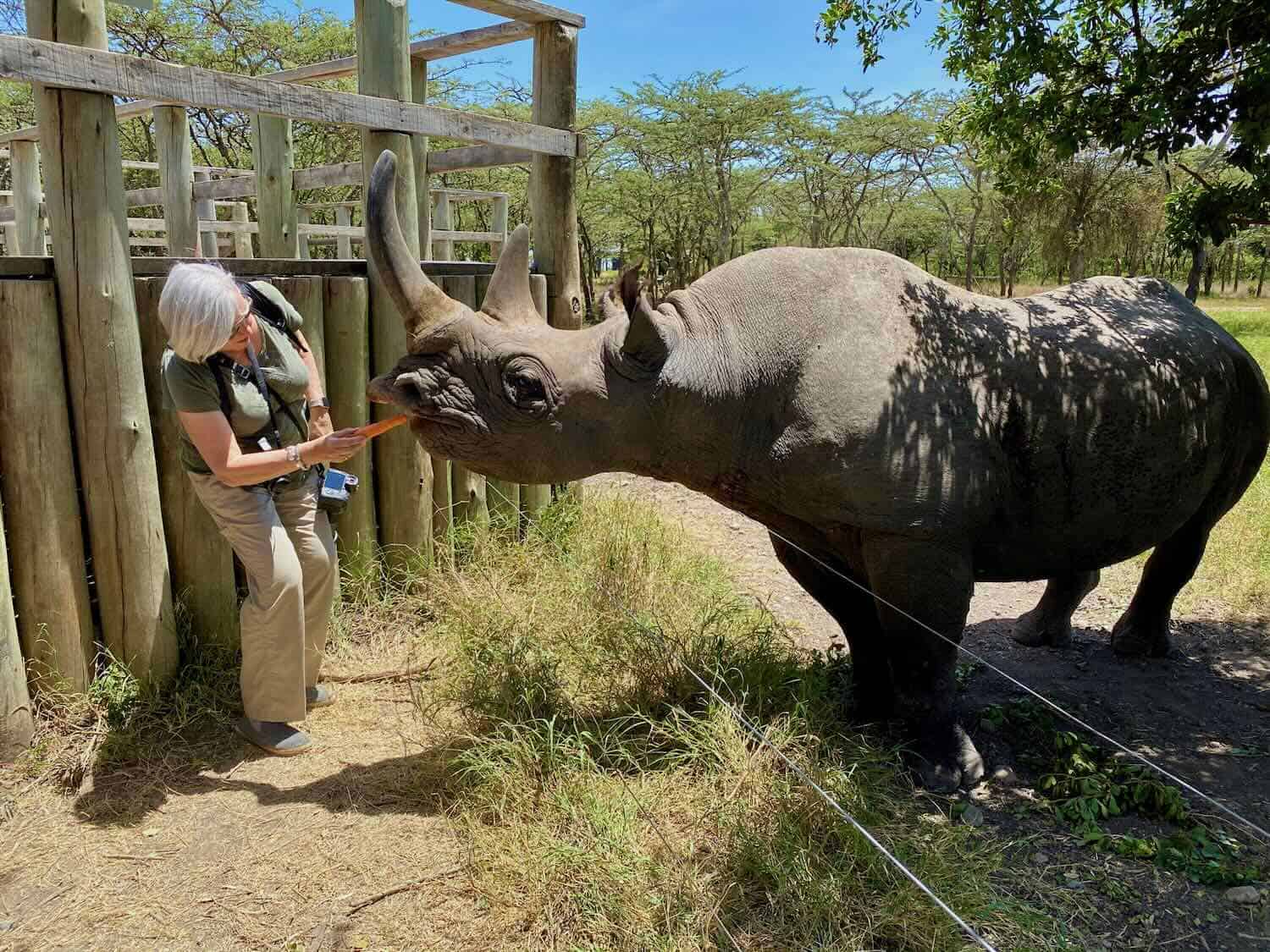
A special treat awaited us at East Africa’s largest black rhino sanctuary. It’s the home of the last two northern white rhinos. (They honestly don’t look that much different than black ones.)
Our guide introduced us to Baraka, one of the first rhinos born on the Conservancy. After losing an eye to an infection following a fight, he, unfortunately, developed a cataract in the other eye and subsequently became completely blind.
With a low chance of survival on his own, Baraka was moved to a 100-acre enclosure to ensure his safety. Baraka is now an ambassador for his species.
We entered a feeding platform to get up close to Baraka and feed him a carrot! Have you ever fed a rhino?
We also browsed the informative exhibits. Ol Pejeta provides community education, so Kenyan children become well-acquainted with their natural heritage and the forces that threaten it.
Another Game Drive
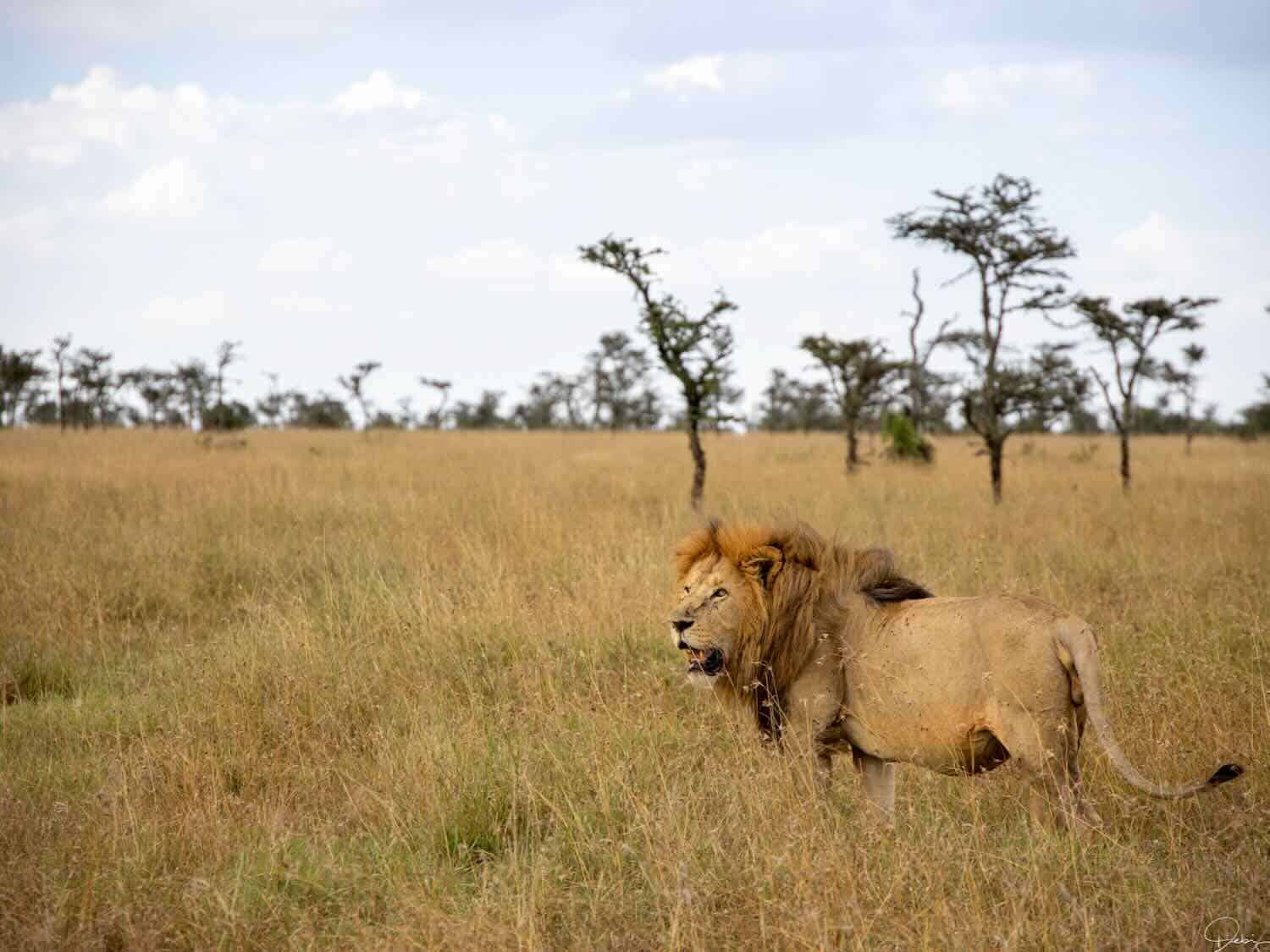
This afternoon’s outing brought the sighting of a king, the male head of a lion pride after a kill. Although we did not see the slaughter, we saw a partially consumed carcass.
This incident demonstrated wild animals’ fight for survival. After his meal, Mr. Lion seemed somewhat drowsy, but what a magnificent creature.
Bush Dinner
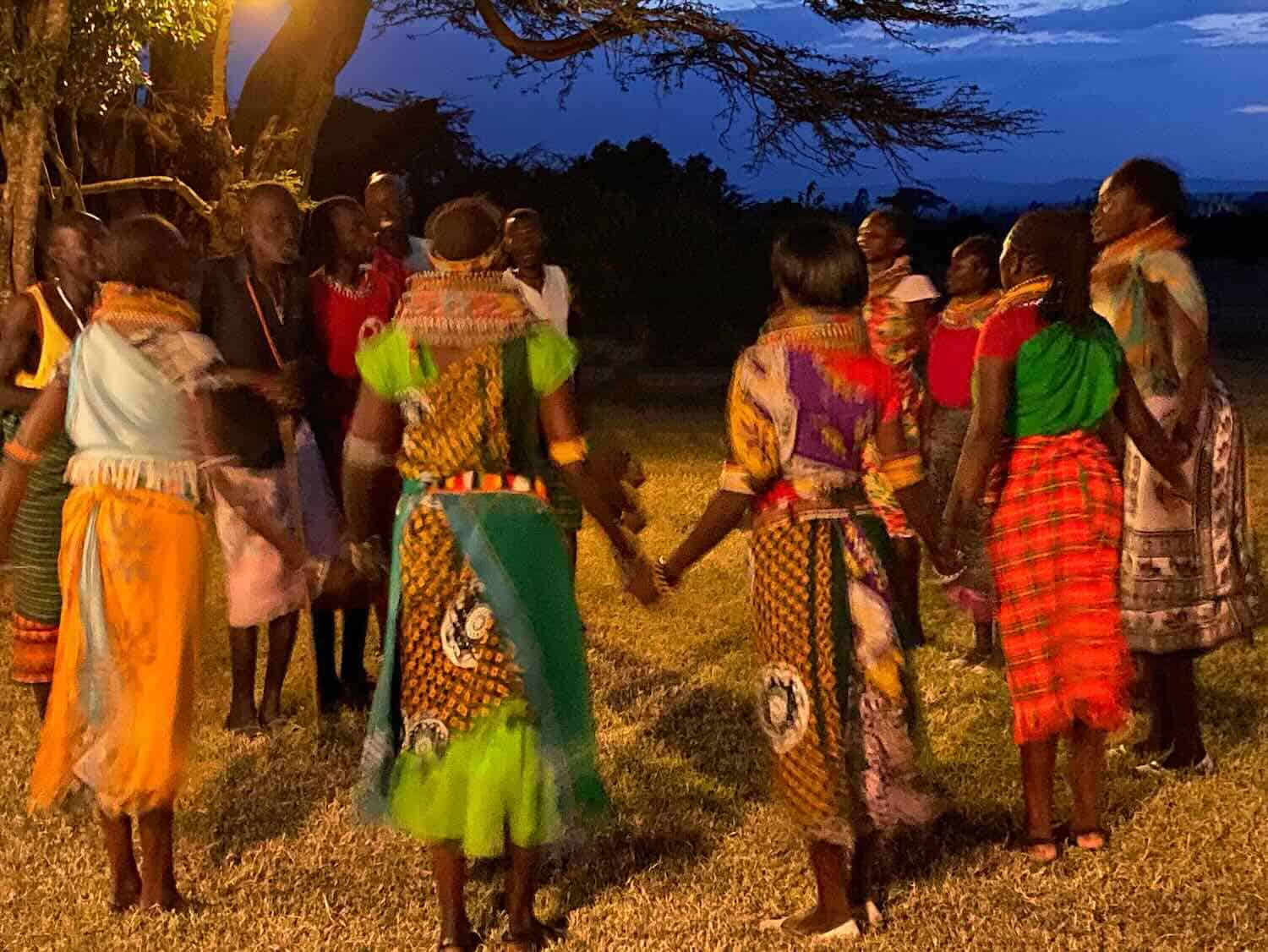
The evening brought a lantern-lit bush dinner under the stars with Masai dancers. Our meal featured grilled meat cooked as we wished and plenty of veggies. The traditionally dressed Masai entertained us with drumming, jumping, and dancing.
Day 7: Looking for leopards
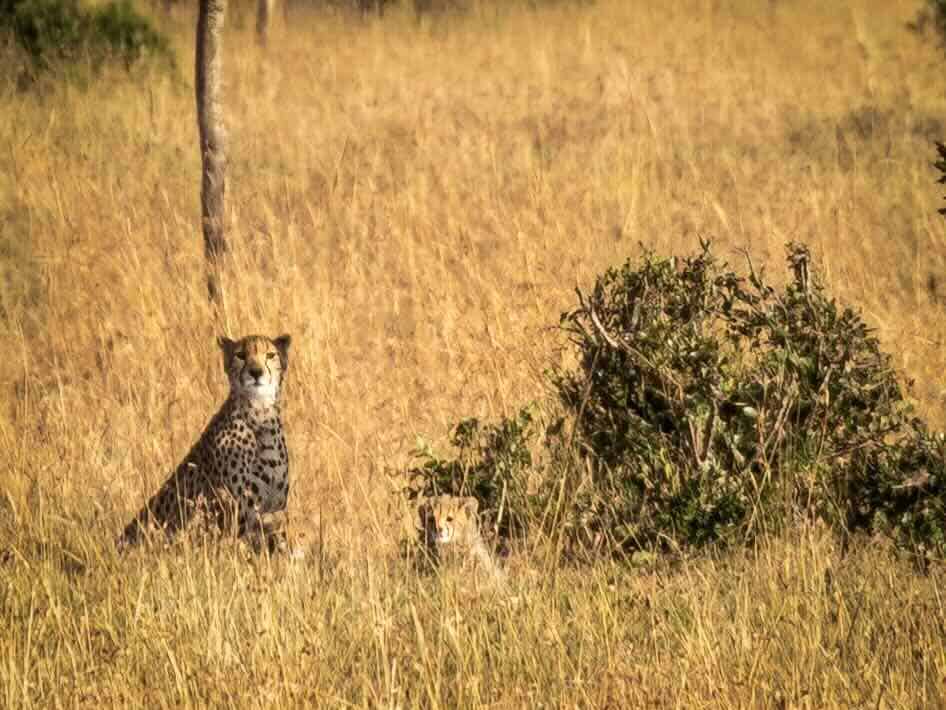
Yet another foggy morning, and I asked our guide to stop to photograph the acacia tree standing in front of the morning sky. It’s become one of my favorite photos.
We were only missing a leopard sighting to complete the big 5, so we jokingly put in our order for one. Lo and behold, we got lucky.
While the leopard was not terribly close (for photos), she had many cubs. Another example of the circle of life.
After dinner, we had signed up for a night game drive in hopes of seeing predators stalking their prey. I will skip this experience if I am ever fortunate enough to go again.
Most of the night safari was spent shining a strong flashlight into the trees. At the very end, we spied two lions on the prowl but couldn’t really follow them.
Day 8: Thomson Falls, Lake Naivasha and hippos
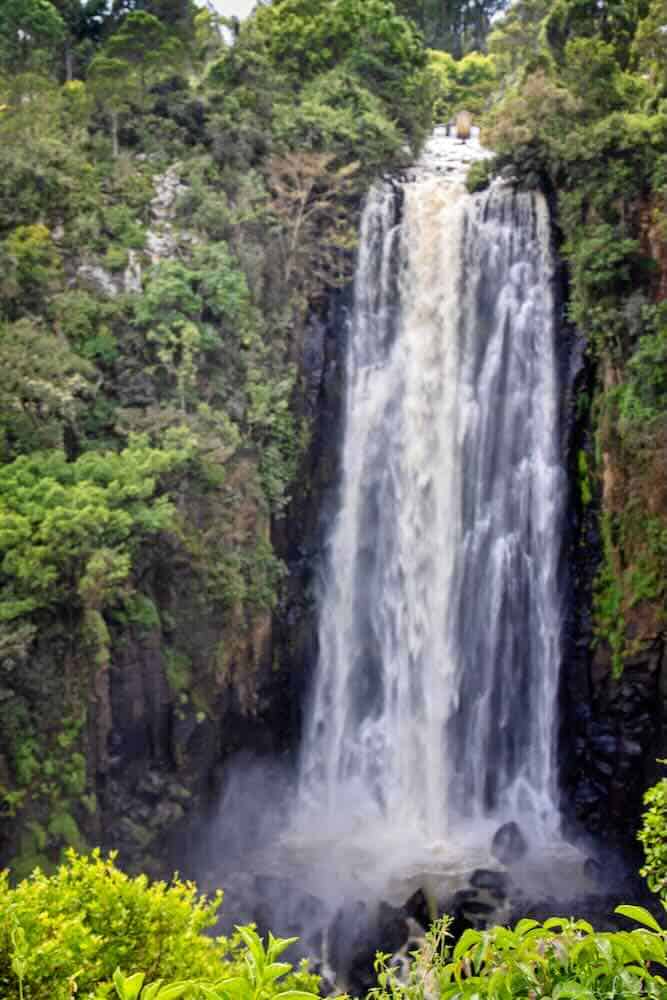
On our last day, we headed back toward Nairobi. We made a short stop in Nyahururu to photograph the impressive Thomson Falls.
We proceeded through the Great Rift Valley until we reached Lake Elmentaita Resort, another fine Serena Camp, for a late lunch. The facility rests by the lake, where we saw flamingos and more zebras.
A contour of the mountain suggests a shape called the Sleeping Warrior. It’s an eroded crater that resembles the resting profile of a massive Maasai warrior. I liked that!
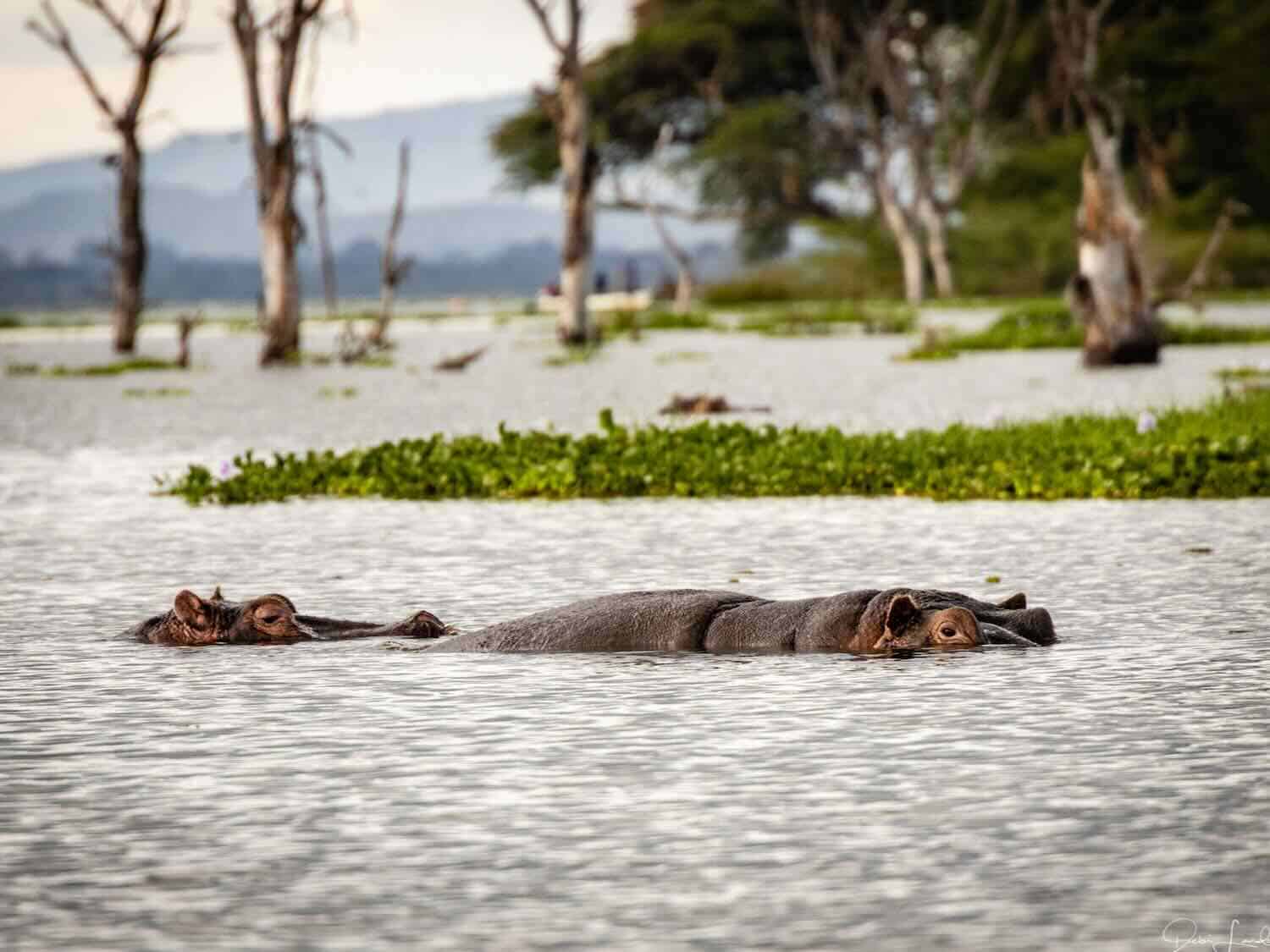
We drove on to Lake Naivasha, the highest lake in the Great Rift Valley, to encounter hippos. While we had checked off the Big 5, we had not discovered any hippos. Here, a crazy experience awaited.
We climbed into small boats driven by a small engine and a local employee. Swimming all around us was a bloat of hippos; yes, that is what a hippo group is called.
The hippos were huge and a bit scary. The entire scene seemed eerie, with dead trees growing out of the lake and an angry storm approaching.
One of the guides called a bird off the shore (similar to falconry, but not a hawk). It swooped over to him at top speed. However, I was ready to get back to land at this point.
Dinner at Carnivore
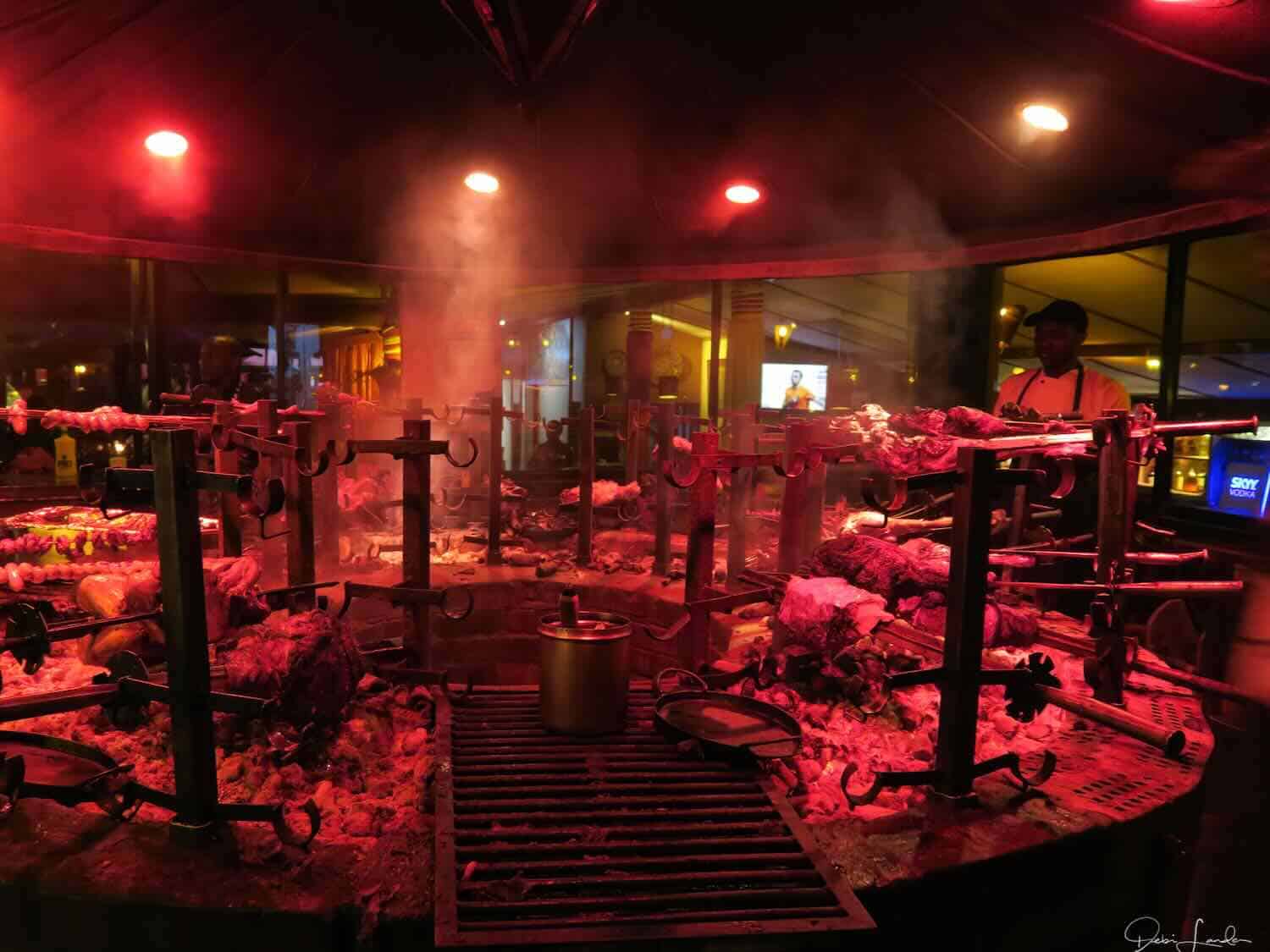
Sadly, we were finished with wildlife sightings, but one final stop remained before the airport: a farewell dinner at Carnivore Restaurant. Caught up in traffic, we were late to the famed open-air restaurant.
Carnivore’s specialty is an extensive variety of meat and an all-you-can-eat meat buffet (think Brazillian steakhouse). They were famous for their game meat until Kenya banned game meat sales in 2004.
We ate quickly, but I was happy we fit in the iconic eatery. We were then dropped off at the airport and boarded our return flight.
Final thoughts on 10 days in Kenya
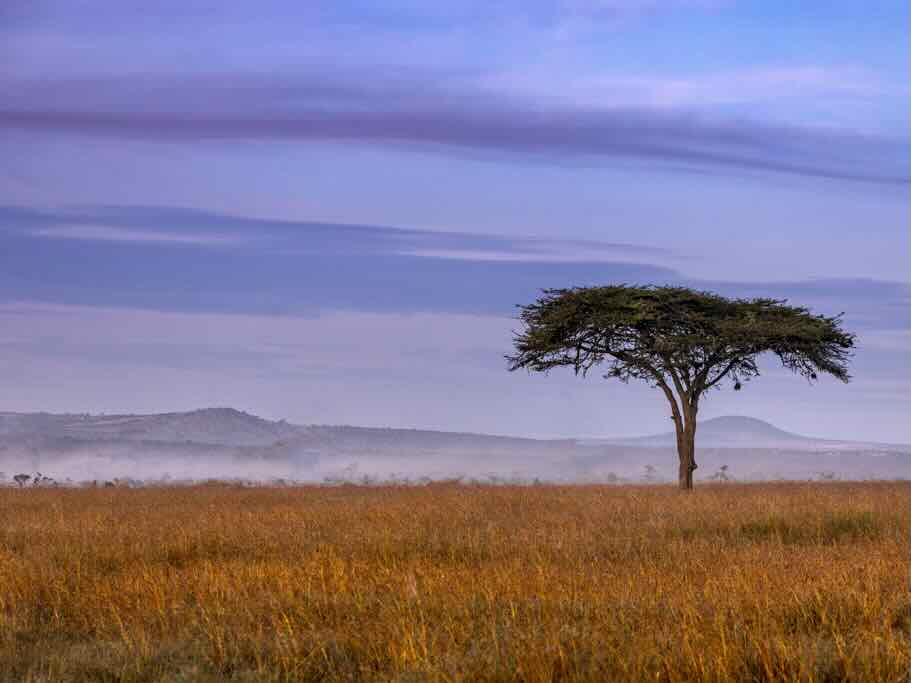
The tour far exceeded my expectations in every way. The lodging was outstanding, meals were excellent in clean facilities.
I received eight-game drives in a safari van. Our knowledgeable guides ensured we saw as many animals as possible from as close as possible. You can’t visit Africa and return home without a greater love of wildlife and a more passionate connection to Mother Nature.
If you count the day I left and then day I returned, this was 10-day tour.
What to pack for a Kenya safari
- Take the longest camera lens you own.
- Wear shoes that are easy to remove when in the safari vans.
- Pack neutral-colored clothing such as khaki, green or beige. No white clothing recommended. Read more dressing for safari tips.
- Bring long sleeve shirts and/or a sweatshirt as early morning and late afternoon game drives can become chilly.
- You’ll need bug spray.

